Baseball History Comes Alive Now Ranked #2 by Feedspot Among All Internet Baseball History Websites and Blogs!
Guest Submissions from Our Readers Always Welcome!
Subscribe to Baseball History Comes Alive for automatic updates (sign-up block found in right side-bar)
As a Free Bonus for subscribing, you’ll get instant access to my two Special Reports: Memorable World Series Moments and Gary’s Handy Dandy World Series Reference Guide!
Ted Williams Photo Gallery
Click on any image below to see photos in full size and to start Photo Gallery:
Ted Williams Recalled to Active Duty, January 9, 1952
Let’s Remember One of the Greatest Individual Seasons of All-Time: Ted Williams’ Historic 1941 Season
“If there was ever a man born to be a hitter it was me…A man has to have goals – for a day, for a lifetime – and that was mine, to have people say, ‘There goes Ted Williams, the greatest hitter who ever lived’ ” –Ted Williams
Sixty-nine years ago yesterday, January 9, 1952, marked the anniversary of an important day in the life of Ted Wiliams. The Red Sox’ great outfielder was being recalled to active duty. Ted had already missed three years due to service in World War II. In the months ahead, Ted will be tasked with flying 39 combat missions and will survive a crash-landing after being shot down. Ted won’t return to the Red Sox until late in the 1953 season.
This occasion gives me a chance to say a few words about the career of one of baseball’s all-time greats, and especially to highlight his historic 1941 season.
Ted Williams’ Staggering Career Numbers
The quotes above may sound cocky, but as Dizzy Dean once said ”It ain’t braggin’ if you can do it”, and, as we all know, there was never any doubt that Ted Williams could “do it”!
There’s also little debate that Ted Williams was the greatest pure hitter the game has ever seen. He played his entire 19-year major league career with the Red Sox (1939–1942 and 1946–1960). He was a seventeen-time All-Star, a two-time American League Most Valuable Player, a six-time American League batting champion, four-time American League home run leader, four-time American League RBI leader, and a two-time Triple Crown winner.
Over his career, in which he lost three full seasons and parts of a fourth to military service, he hit .344 (seventh all-time), with 2,454 hits, 521 home runs (19th all-time), 1837 RBIs (14th all-time), and a .482 on-base percentage (first all-time). His .634 slugging average is second all-time, behind only Babe Ruth’s .689. His 191 career OPS+ is also second, behind only Ruth’s 206 (100 being the major league average).
The “Splendid Splinter’s” Historic 1941 Year
Ted Williams’ 1941 season is often considered to be the best offensive season ever, even though the MVP award that year went go to Joe DiMaggio. He led the league in all the following categories: runs (135), home runs (37), walks (147), batting average (.406), on-base percentage (.553), OPS (1.287), and OPS+ (235). His .406 batting average is still the highest single-season average in Red Sox history, the highest batting average in the major leagues since 1924, and the last time any major league player has hit over .400. His .553 OBP and .735 slugging average are both also the highest single-season averages in Red Sox history. The .553 OBP stood as a major league record for 61 years, and his .735 slugging percentage was highest in the major leagues between 1932 and 1994. Williams also had 185 hits and was second in RBIs with 120. He accomplished all this while striking out only 27 times in 606 plate appearances.
Would He Sit Out the Last Two Games?
On September 28, before the final two games of the 1941 regular season, a doubleheader against the Philadelphia Athletics, he was batting .39955, which would have been officially rounded up to .400. Red Sox manager Joe Cronin offered him the chance to sit out the final day, but Ted Williams famously declined, saying: “If I’m going to be a .400 hitter I want more than my toenails on the line.” He proceeded to go 6-for-8 and finished the season at .406.
1941 All-Star Game, His Greatest Thrill
In the fourth inning of the 1941 All-Star Game, Ted Williams doubled to drive in a run. In the ninth inning, the American League trailed 5-4 and with runners on first and third, Williams homered “with his eyes closed” to secure a 7-5 American League win. Williams later said that that game-winning home run “remains to this day the most thrilling hit of my life.”
Ted Williams was a first-ballot selection to the Hall of Fame in 1966 and his #9 has been retired by the Red Sox. He was named to the Major League All-Century team and the Major League Baseball All-Time team.
What would Ted Williams’ numbers be if he had not lost all that time serving his country? We can only speculate.
Gary Livacari
Check out my latest book, recently nominated for the SABR 2020 Lawrence Ritter Award: “Reflections on the 1919 Black Sox: Time to take Another Look,” now available on Amazon in e-book and paperback. All profits go to the Illinois Veterans Foundation: https://amzn.to/2uk6KBU


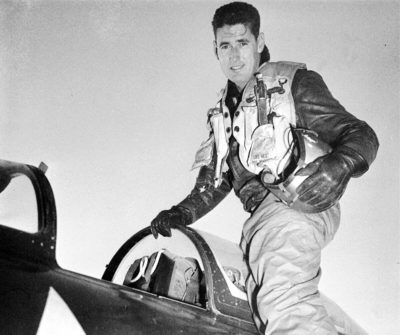
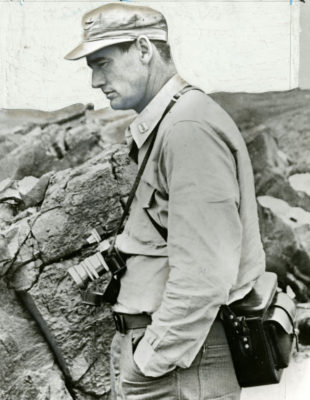
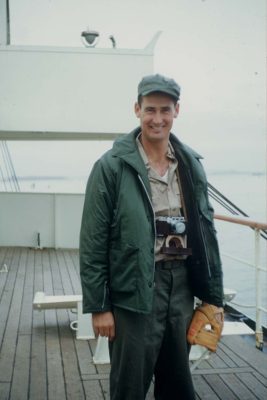
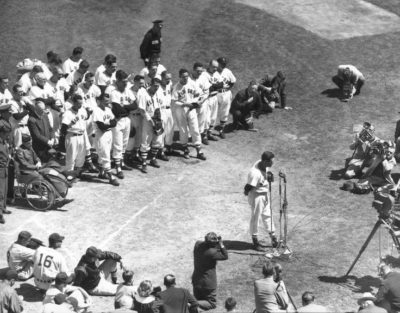
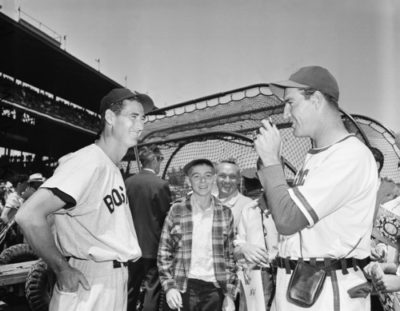
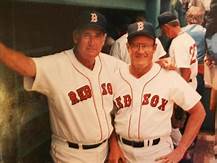
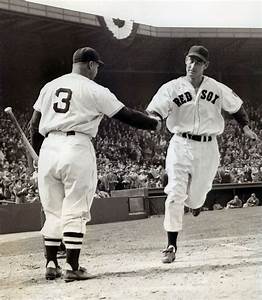
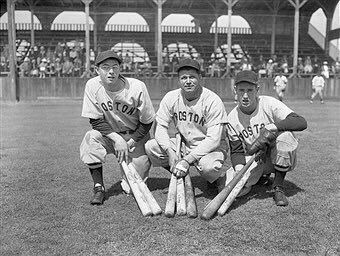
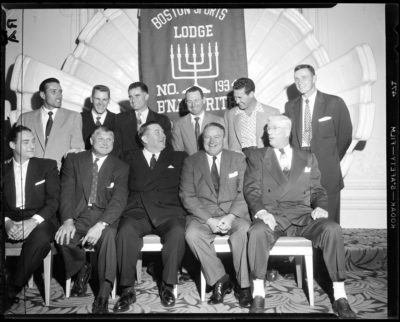
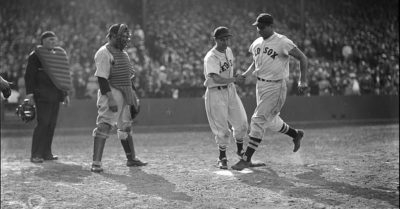
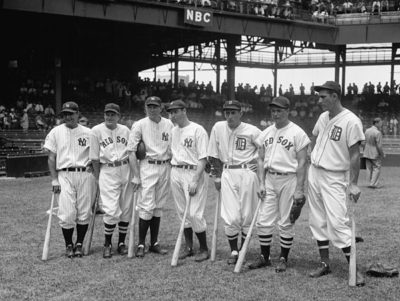
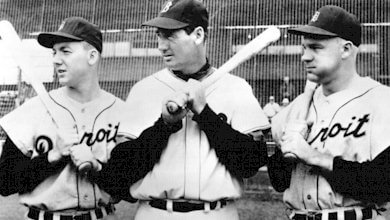
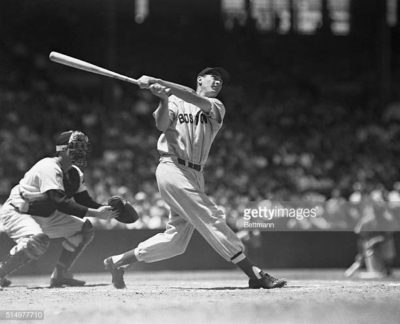
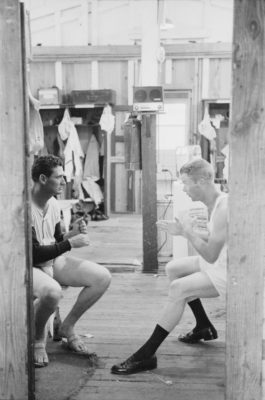
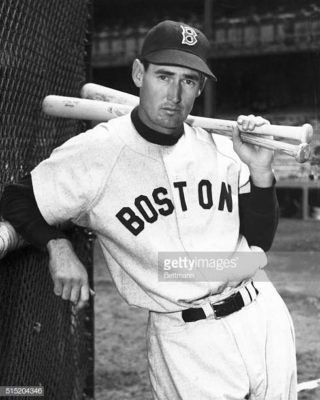
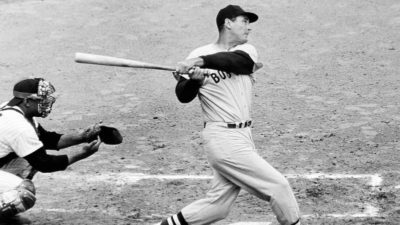
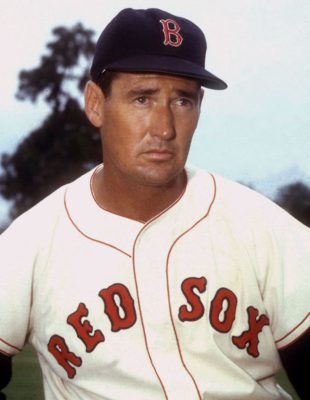
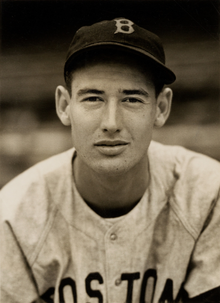
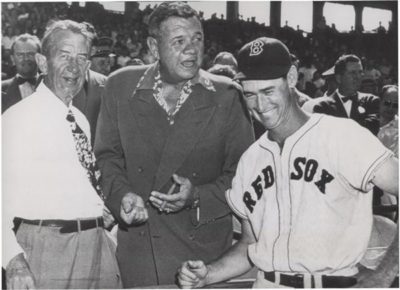
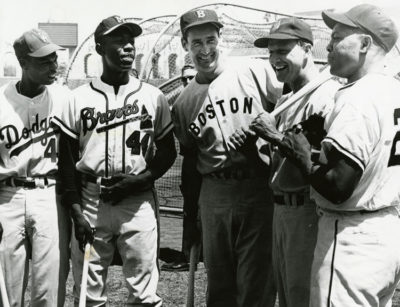
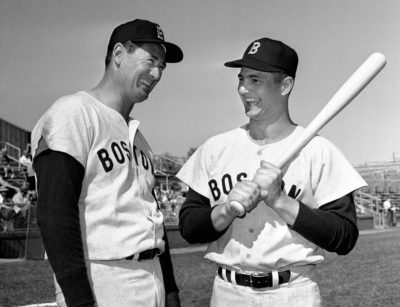
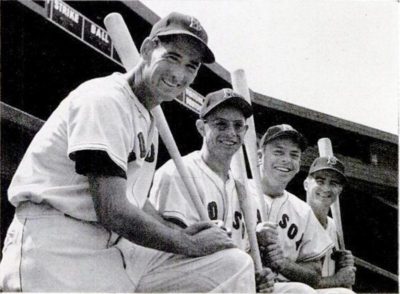
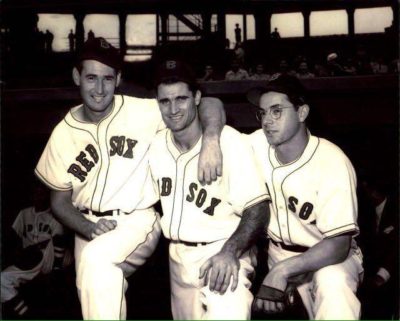
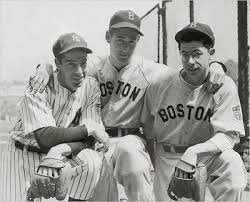
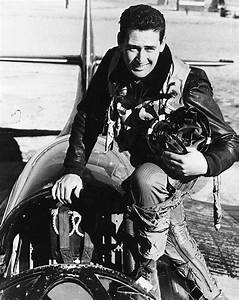
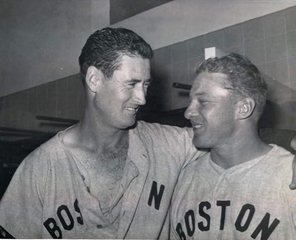
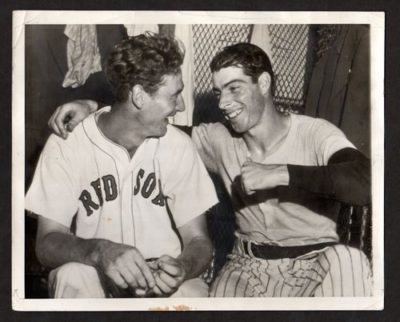
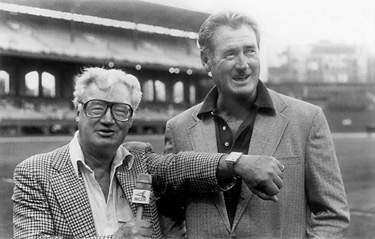
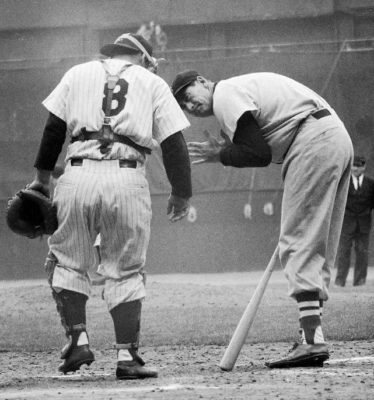
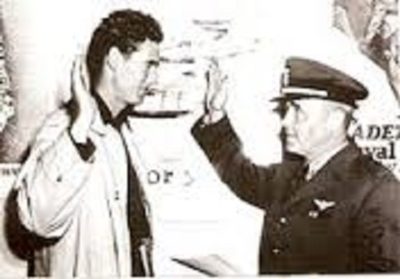
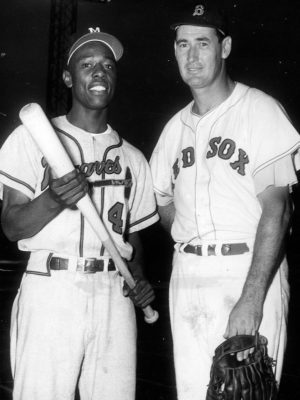
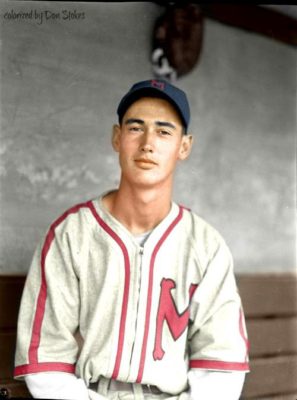
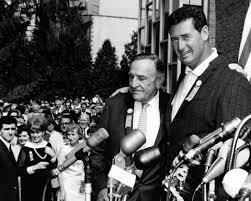
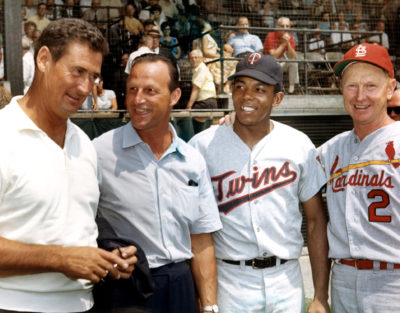
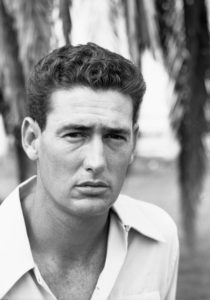
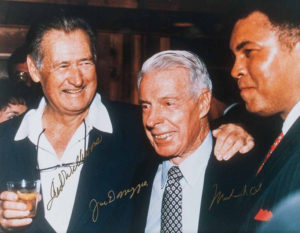
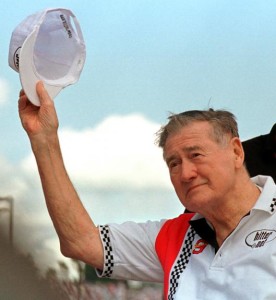
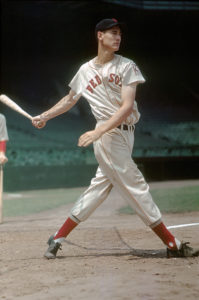
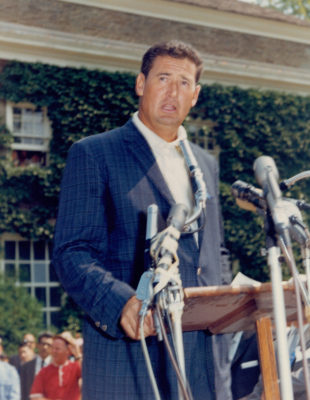
Thank you so much for this article. I knew he had a good 1941, but did not know exactly HOW good!
You bet Kerry, thanks!
It would have been interesting to see how many home runs he would have hit without missing 5 prime years. I believe he would have passed Ruth.
Comment from Bill Schaefer
“That was some year, Gary! And in ’42 he had another monster, batting .356 with more runs scored, more RBI, and three more total bases. Best swing I ever saw.
DD might be right about passing Ruth. But a close analysis, without the service years, puts him right around 700, give or take five or so. Had Mays not served he definitely would have totaled 720+ before Aaron.
I agree “The Splendid Splinter” was the best pure hitter. The only rap was, that in a game winning situation he would not swing at a pitch outside his sweet zone and take a walk. Whereas, DiMaggio would swing at ball off the plate and hit a game winning double.”
How Williams did not win the MVP in 1941 is a wonder. Probably due to how much the baseball writers disliked him (which was mutual). I saw Teddy Ballgame play in his last season at Comiskey Park. Bill Veeck had built a “picnic area” under the left field stands with chain link fencing covering windows in the wall. With my friends (11 year olds), we yelled at Williams when he was in left field. He was clearly close enough to hear us but ignored our calls. That was classic Williams. As was his final year, batting over 300 as a 41 year old and hitting a home run in his final at bat! His eye was amazing which is how he also got walked a lot, even beyond being pitched around.
Thanks Jay, great comments. I have a vague recollection of seeing him play at Comiskey in his last year also, but I can’t recall the circumstances. Just wondering if it was at the same game. As far as the MVP, DiMaggio also had a great year in’41, not quite as good as Ted Williams’ year though, but it was also the year of his famous 56-game hitting streak. I’m fairly sure that’s why he got it. I think I remember reading that somewhere.
Of course, just as the press hated Williams, I hated the Yankees. Still can’t argue too hard vs The Yankee Clipper.